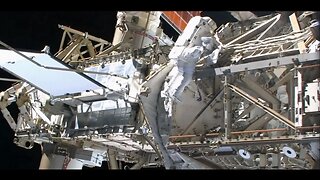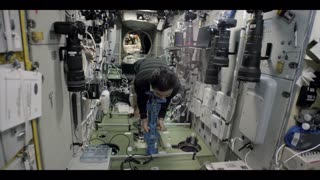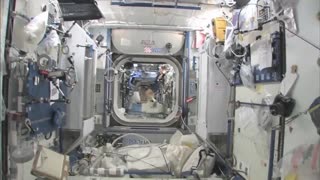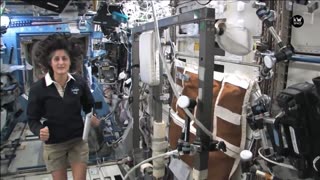HOW IT WORKS: The International Space Station
Living in space is a unique and challenging endeavor that requires careful planning, advanced technology, and adaptation to a microgravity environment. Astronauts and cosmonauts live and work on space stations like the International Space Station (ISS) for extended periods of time. Here's an overview of how people live in space:
Space Stations: Astronauts typically live and work aboard space stations like the International Space Station (ISS), which orbits Earth. These stations are equipped with living quarters, laboratories, and various systems to support human life.
Living Quarters: Space station living quarters are small and compact, designed to maximize space efficiency. Each astronaut has a sleeping area, a personal workspace, and access to common areas like the galley (kitchen) and hygiene facilities.
Microgravity: One of the primary challenges of living in space is adapting to microgravity, where there is very little gravity. This can affect the human body in several ways, including muscle and bone loss, fluid shifts, and changes in vision.
Exercise: To counteract the effects of muscle and bone loss, astronauts exercise regularly on specialized equipment, such as treadmills and resistance machines, which are designed to work in microgravity.
Nutrition: Astronauts follow carefully planned diets to ensure they get the right nutrients and maintain their health in space. Food is often dehydrated or freeze-dried and then rehydrated on the station.
Hygiene: Space stations have facilities for personal hygiene, including toilets and showers. Water is used sparingly and is recycled as much as possible.
Work and Research: Astronauts spend their days conducting scientific experiments, maintaining equipment, and performing spacewalks when necessary. The research conducted in space benefits fields such as biology, physics, and Earth sciences.
Communication: Astronauts stay in touch with mission control on Earth using communication systems, and they can also communicate with their families via video calls.
Spacesuits: When astronauts need to venture outside the space station for spacewalks or repairs, they wear specialized spacesuits to protect them from the vacuum of space and extreme temperatures.
Sleep: Astronauts have sleeping bags in their personal quarters and follow a schedule that includes sleep, work, and leisure time, just like on Earth. However, without a day-night cycle, their schedule is carefully regulated.
Psychological Well-being: Astronauts receive training in coping with the isolation and confinement of space. Maintaining mental well-being is crucial for long-duration missions.
Safety and Emergency Procedures: Astronauts are trained in emergency procedures to handle various potential risks, including fire, equipment failures, and medical emergencies.
Living in space is a testament to human adaptability, scientific progress, and international cooperation. It allows astronauts to conduct groundbreaking research and advance our understanding of space and its potential for future exploration, such as missions to the Moon and Mars.
-
 4:27
4:27
World Science Festival Archive Channel
1 year agoScience In The International Space Station
7 -
 1:06
1:06
Eagles of Space
1 year agoLiving and working in NASA International Space Station
3 -
 0:23
0:23
Nasa Adventures
5 months agoInternational Space Station
37 -
 10:01
10:01
kh20
3 years agoLife Inside the International Space Station
921 -
 28:57
28:57
waseemrazzaq555
9 months agoHow it work : International space station
-
 29:16
29:16
Journey Beyond Adventures
9 months agoNASA International Space Station
7 -
 7:40
7:40
DeepSpaceTV
1 year agoBefore The ISS There Was The Freedom Space Station
15 -
 0:05
0:05
Skillful Amateur
1 year agoAstronaut in the International Space Station!
12 -
 10:01
10:01
Beyond Earth: NASA and Space
1 year agoTour the International Space Station - Inside ISS - HD
14 -
 1:37
1:37
Eagles of Space
1 year agoNASA International Space Station of Earth
4